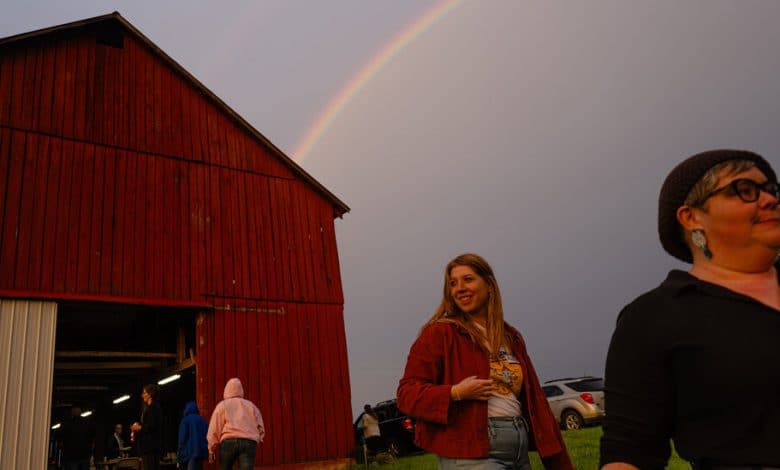In a Divided Nation, an Infrastructure Develops to Build Bridges

Bernard Clay, a Black, middle-aged data analyst and poet from Louisville, Ky., was leery when he was thrown together with Shaelyn Bishop, a shy, white, young biologist who grew up on a family farm in rural Green County, Ky., 15 minutes from the closest town.
But over a structured brainstorming session in 2022, amid a weekend retreat with the Kentucky Rural-Urban Exchange, something clicked. Mr. Clay, 47, had a side project chronicling Kentucky’s Black Civil War veterans. Ms. Bishop, 34, during quiet hours alone studying the ecology of the Clay Hill Memorial Forest in Taylor County, Ky., had pondered the old stones that almost certainly marked the burial grounds of the once-enslaved, a forgotten memorial to a hidden past.
An effort was born — the Enslaved People of Clay Hill, or EPOCH, Legacy Project — to officially recognize the burial ground. And a connection was made across the gulfs of race, age and geography.
The nation’s poisonous divisions, exacerbated by politicians, cable news and social media, and collectively known as the outrage industrial complex, have been much lamented. Less noticed is the counterweight, a constellation of nonprofits like Kentucky RUX, devoted to bridging divides — urban and rural, Black and white, L.G.B.T.Q. and straight, left and right. Call it the kumbaya industrial complex.

Less noticed than the nation’s poisonous divisions is the counterweight, a constellation of nonprofits like Kentucky RUX, devoted to bridging divides.Credit…Jon Cherry for The New York Times
The problem: The starkest divide — Trump-branded conservatism versus the rising political left — may be the one where no one is interested in reconciliation.
